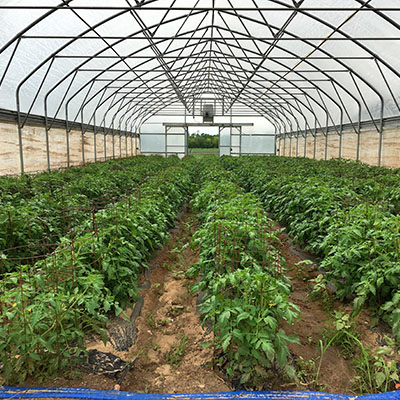Growing for Market in partnership with Johnny's Selected Seeds has created a library of expert information about growing and selling vegetables and flowers. Links in the article will take you to johnnyseeds.com.
Subscribe to Growing for Market for more great ideas about growing and marketing!
For more topics in the series, click on Market Farming Basics in the left column.

![]()
Got weeds?
Here are some sobering statistics as you begin the weeding season on your farm or market garden: A Minnesota study found that a square foot of soil, 6 inches deep, contained from 98 to 3,068 viable weed seeds. Many seeds remain viable for decades; Jimsonweed has a 90 percent germination rate after 40 years in the soil and field bindweed seeds are viable for more than 50 years. All those seeds are just sitting there, in what is known as the “weed seed bank,” waiting for favorable conditions that will allow them to germinate.
Once they do, they compete with crops for moisture, nutrients, light, and space, and in many cases they outcompete them. That’s why the most successful vegetable farmers make weed control a priority. They prevent weeds from getting established, and they don’t let weeds growing near their fields go to seed. Over time, the weed seed bank diminishes, and weeding becomes less of a major chore.
On a new farm or in a new field, however, you can expect that weeding is going to be a big part of your workload. You’ll probably have to deal with both annual and perennial weeds, so you’ll need different strategies and tools. Here are some suggestions for staying ahead of weeds.
Annual weeds
Generally speaking, annual weeds come from seeds that either dropped on the surface of the soil or were brought up to the surface by plowing, tilling, or other soil disturbance. All weed control efforts, therefore, should aim to disturb the soil as little as possible to avoid giving new seeds conditions favorable for germination.
The first line of defense against annual weeds is cultivation. The ideal time to cultivate is when weeds are in what’s known as the “thread stage,” which means they have just germinated and are no thicker than a thread. At that point, they are easily removed with a quick pass of a wheel hoe, or by a small, lightweight hoe such as a colinear hoe. As weeds get bigger, cultivation tools need to get bigger and stronger to deal with them. Johnny’s trapezoid hoes and scuffle hoes are available in several sizes to deal with increasingly tough weed problems. Read the catalog descriptions carefully when buying tools to ensure that you have a hoe for each type of weed situation.
A popular weed-control strategy on organic vegetable farms is called “stale seedbed” planting, in which a bed is tilled and irrigated to encourage weed seeds to germinate. The weeds are killed before the crop is planted or right before the crop emerges. Weeds are best killed by flame weeding with a propane torch, which won’t disturb the soil and bring up new weed seeds. Here is an example of how to do stale seedbed planting: Till a bed, direct seed a crop such as carrots, and irrigate the bed. A few days before the crop is expected to emerge, flame weed or very shallowly hoe the entire bed. When the crop emerges later, it won’t have to compete with weeds right away and can get off to a good start. You can tell when a crop is going to emerge by digging up a few seeds to see whether they are starting to germinate. Or you can place a piece of glass over a small part of the row; the glass will warm the soil and get the seeds below it to germinate a few days ahead of the rest.
Another approach to weed control is to cover bare soil with mulch. The key to success with plastic and biodegradable film mulch is to get it on while the soil is free of weeds, and to stretch it taut for maximum soil contact. Keep planting holes as small as possible, just big enough to accommodate the mature size of the crop but with no extra space where weeds can grow. Some growers use landscape fabric, which can last a decade or more if handled well, for paths and even on beds. The heavy black fabric is best for long-season crops such as tomatoes. Organic mulches such as hay and straw are more difficult and time-consuming to apply, but they benefit the soil by adding nutrients and organic matter as they decompose.
Another important strategy for getting ahead of annual weeds is to keep the soil covered with cover crops whenever possible. If there is a short window between harvest and planting, say a month or two between spring and fall crops, a quick annual such as buckwheat can be planted to keep the soil covered so weeds can’t get established. Cover crops also can be used for a longer period, or even a full season, to combat a weed problem. The key is to choose the right cover crop that will germinate and grow quickly, outcompeting weeds.
Johnny's cover crop chart summarizes the best uses for many cover crops. Some other good resources are "Plant and Manage Cover Crops for Maximum Weed Control" from the Virginia Association for Biological Farming and the book, "Managing Cover Crops Profitably" by the Sustainable Agriculture Network, available in the JohnnySeeds.com bookstore.
Perennial weeds
A much bigger problem, especially for organic growers, are the perennial weeds such as bindweed, Canada thistle, yellow nutsedge, pokeweed, and dock. Not only do they survive year to year, they also are able to re-grow quickly after cultivation from vegetative parts such as roots and tubers. In many cases, cultivation (cutting off the parts above the soil) stimulates the below-ground parts to send up even more stems and can spread pieces of root to new areas. In addition, many perennial weeds are prolific seed producers, so are able to propagate themselves in multiple ways throughout the season.
If perennial weeds are sparse, you may be able to dig each one with a shovel; just try to get the entire root system. If the roots cannot be removed, keep cutting or mowing the plant to reduce its energy stores below ground, and never let it go to seed.
If perennial weeds are prolific, you may need a summer fallow period in which no crops are planted. Instead, plow the field to bring up the roots of big weeds and let them die on the surface. The perennials will re-sprout, but they will be weakened. Cultivating repeatedly will kill or diminish most of the weeds. A summer fallow may be needed every two or three years in rotation with vegetable crops if weed problems are severe.
Visit Johnny's Selected Seeds for more free information about growing produce, herbs, cover crops and flowers.
• Subscribe to Growing for Market for the latest news and ideas.
Reprinted from JSS Advantage June 2010
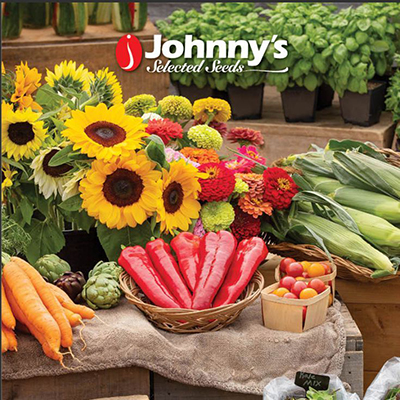
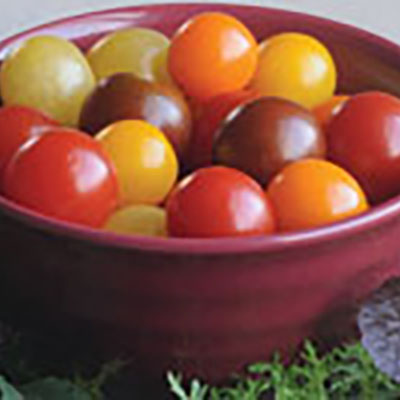
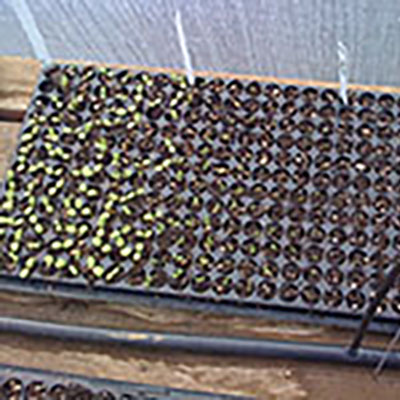

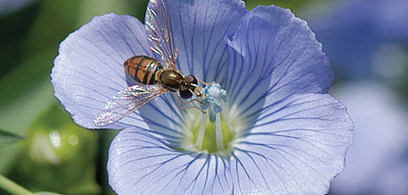 Insect pollination is essential to many vegetable and fruit crops, including tomatoes, squash, pumpkins, watermelons, blueberries, blackberries, apples, almonds, and many others. In the case of watermelons, there will be no fruit without pollination. Some vegetables don't require pollination to set fruit, but pollination by bees will result in larger and more abundant fruits. Nearly 75% of the flowering plants on Earth rely on pollinators to set seed or fruit, as well as one-third of our food crops, and most pollination is performed by honey bees, native bees, and other insects.
Insect pollination is essential to many vegetable and fruit crops, including tomatoes, squash, pumpkins, watermelons, blueberries, blackberries, apples, almonds, and many others. In the case of watermelons, there will be no fruit without pollination. Some vegetables don't require pollination to set fruit, but pollination by bees will result in larger and more abundant fruits. Nearly 75% of the flowering plants on Earth rely on pollinators to set seed or fruit, as well as one-third of our food crops, and most pollination is performed by honey bees, native bees, and other insects. 